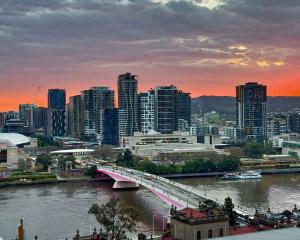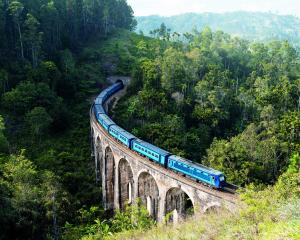
I’m loath to leave Solomon Islands’ isolated Nggatirana Island’s white sand beach, crystal-clear sea, coral reefs and population of three — that I’ve seen — for its largest island, Guadalcanal, and capital, Honiara, population about 116,000. But all good things come to an end.
Two-lane Kukum Highway, Guadalcanal’s only highway, takes us west from Honiara Airport over a bridge at Hells Point where World War 2 bombs still found throughout the Solomon Islands are detonated. We cross the brown Lunga River wending between thickly-vegetated banks. The highway becomes four lanes, passing the impressive 2023-built, 10,000-seat National Sports Stadium, a standout among low-rise, mainly tired-looking buildings and dusty surrounds. Crowds wait for mini-buses; traffic lights don't exist!
The central, small National Museum complex gives me an understanding of the country’s history, traditions and World War 2 history, a lot of the battles between the Japanese and American forces fought in Guadalcanal. Cultural artefacts include a betel nut mortar, a fish-shaped casket for holding a body, tattooing needles made of Ibis wings and legs, panpipes, spears, shark rattle, and shell money — used for bride payments, settling disputes, or exchanged for goods, and still in use.
The Culture and History Gallery in the same complex tells of the first Europeans’ arrival in 1568, a Spanish expedition from Peru, and archaeological finds. A room devoted to The Tensions details the 1998-2003 chaos after settlers from nearby Malaita Island were evicted by Guadalcanal indigenous villagers.

Red umbrellas shade fruit and vegetables at Honiara Central Market; bananas, pineapples, cassava, sweet potato, fern fronds, cabbage, limes, mandarins. Inside a roofed, open-sided area where sellers quietly await a sale, I wander an alley of watermelons. In another I find ginger, peanuts fresh from the ground, breadfruit, yam, taro, ngali nuts, spring onions and bunches of unknown leaves wrapped in banana leaves. Foot-long beans sit next to thin purple aubergine, wooden carvings alongside shell jewellery. Near the waterfront, snapper, yellow fin tuna, skipjack tuna, a turquoise parrotfish, and a fish apparently called sweet lips stare out of chilly bins.

We walk a dirt road to Hotomai Cultural Village. The deep tone of a conch shell sounds. From behind trees, spears raised, loin-clothed warriors run, yelling and lunging, surrounding us.
Its intimidating ... the chief appears, shell money around his neck ... then smiles break out.
Women greet us with song and Nisbert, her mouth stained red from chewing betel nut, dressed, as all women are, in a sago palm top and a skirt made from stripped tubers twisted into string-like strands, proceeds to show us her village.

Men fashion sago palm leaves, bamboo and lawyer cane vine into roofing; women weave fine, stiff strands of the vine or coconut palm spines into baskets. I peer into a wooden hut, used to settle disputes, its walls and roof secured with strips of vine. Spear-like carvings stand vertical across the front of the sago palm roofline. Another holds spears and shields of ancient ancestors, which only chosen men are permitted to enter to seek solutions to village problems.

At the lodges, roofed, open-sided restaurant views are panoramic over a green-hued countryside, hills descending to the coast and Honiara. We set off with a guide for Tenaru Waterfall, a 2.74km walk, descending a wide path through lush, damp rainforest punctuated with red ginger flowers. Cicadas chorus, black butterflies flutter, a white bird flashes overhead. A brown Sleepy Snake about 1m long, shoots across the path ahead of us. The path narrows, wonky steps lead down. I let go of the wooden handrail alongside quickly, bitten by tiny red ants scurrying along it.

The next morning, before heading to the airport, I visit the Art and Craft Market. The huge range of woven baskets, jewellery, carved shell and wooden carved items, especially the dark, kerosene wood bowls, tempt.

The writer travelled courtesy of Tourism Solomons












